PART IV. Die Errors:
Die Clashes:
Counterclash Type II
Definition: Type II counterclashes trace their origin to a stray piece of hard metal that invades the striking chamber. The metal can be a die fragment, a piece of the collar, a piece of hardware like a bolt or washer, a broken-off machine part, or just about anything else one can imagine. In most cases it’s impossible to identify the nature and origin of the foreign object. The object receives an initial strike, which leaves it with a raised design on one or both faces (one face can be protected by a planchet). The object then shifts position within the striking chamber and is struck again. This transfers the design back to the die face in the form of an incuse mirror image. Generally, only the field portion of the die face is affected. Every coin struck afterward shows raised, normally-oriented design elements in an unexpected location.
There are six Type II counterclash errors recognized among U.S. coins. There is a 1969-S cent with an extra E PLURIBUS UNUM on the reverse face that runs at an angle of almost 90 degrees to the normal motto. There are two 1983 and a 1985 cents. One of the 1983 (CLO-001) shows an extra LIBER upside down and above the date. The other 1983 (CLO-002) shows an extra N GO weaving through IN GOD WE TRUST. The 1985 shows an E from E PLURIBUS UNUM in bay 3.There is a 2000-P Sacagawea dollar with a rather faint counterclash involving the letters ICA (from AMERICA) and the designer’s initials TDR. Finally, the images below illustrate the fifth, a very strong counterclash involving the letters CAESAR RODNEY on the reverse face of a 1999-P Delaware state quarter.
.
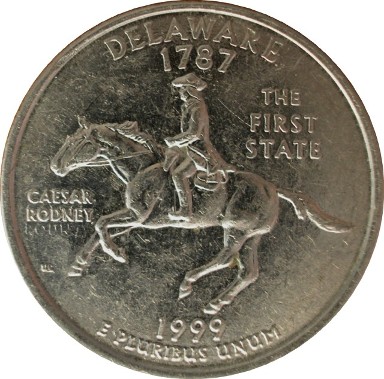
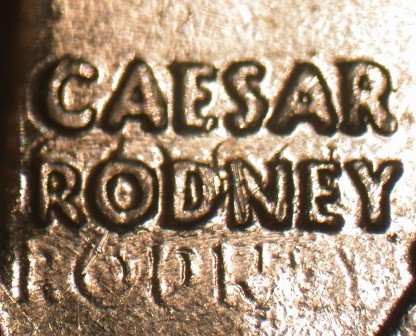
1999-P Delaware quarter with a Type II counterclash image of CAESAR RODNEY on the reverse face.
There are three Canadian quarters with counterclash errors. The February 1999 Millennium series quarter shows a “floating hand”. The September 1999 quarter shows an extra face within the body of the little girl on the right (the “four faces” counterclash) and the July 1999 Canadian quarter with counterclash appearing in both the field and on the design. Below images highlight the July 1999 Canadian quarter.
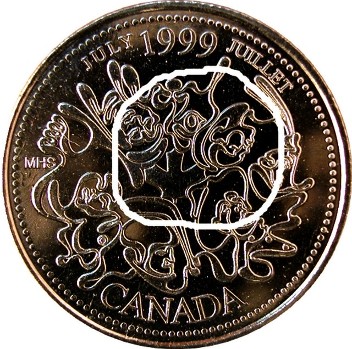
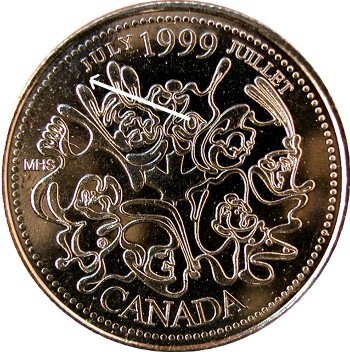
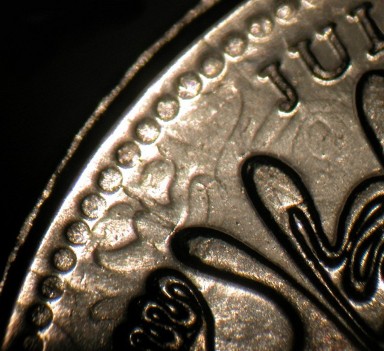
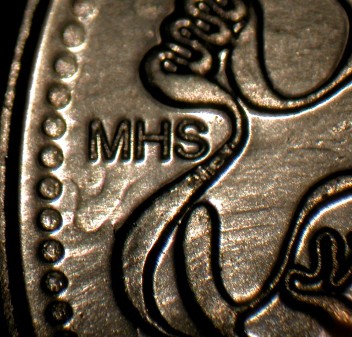
A close-up of the counterclash near the 10:30 clock position (left). A close-up of the counterclash near the 9:30 clock position (right).